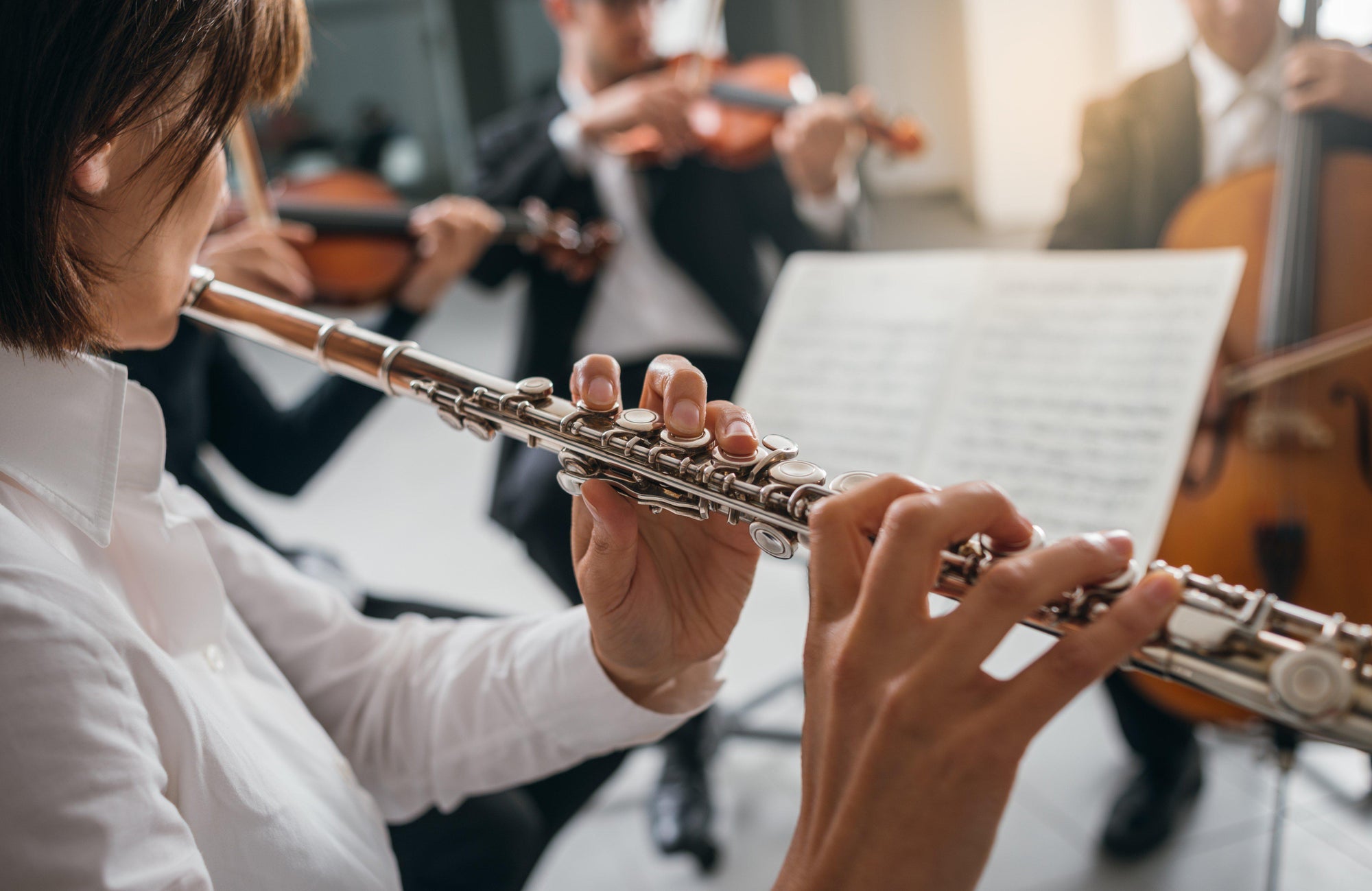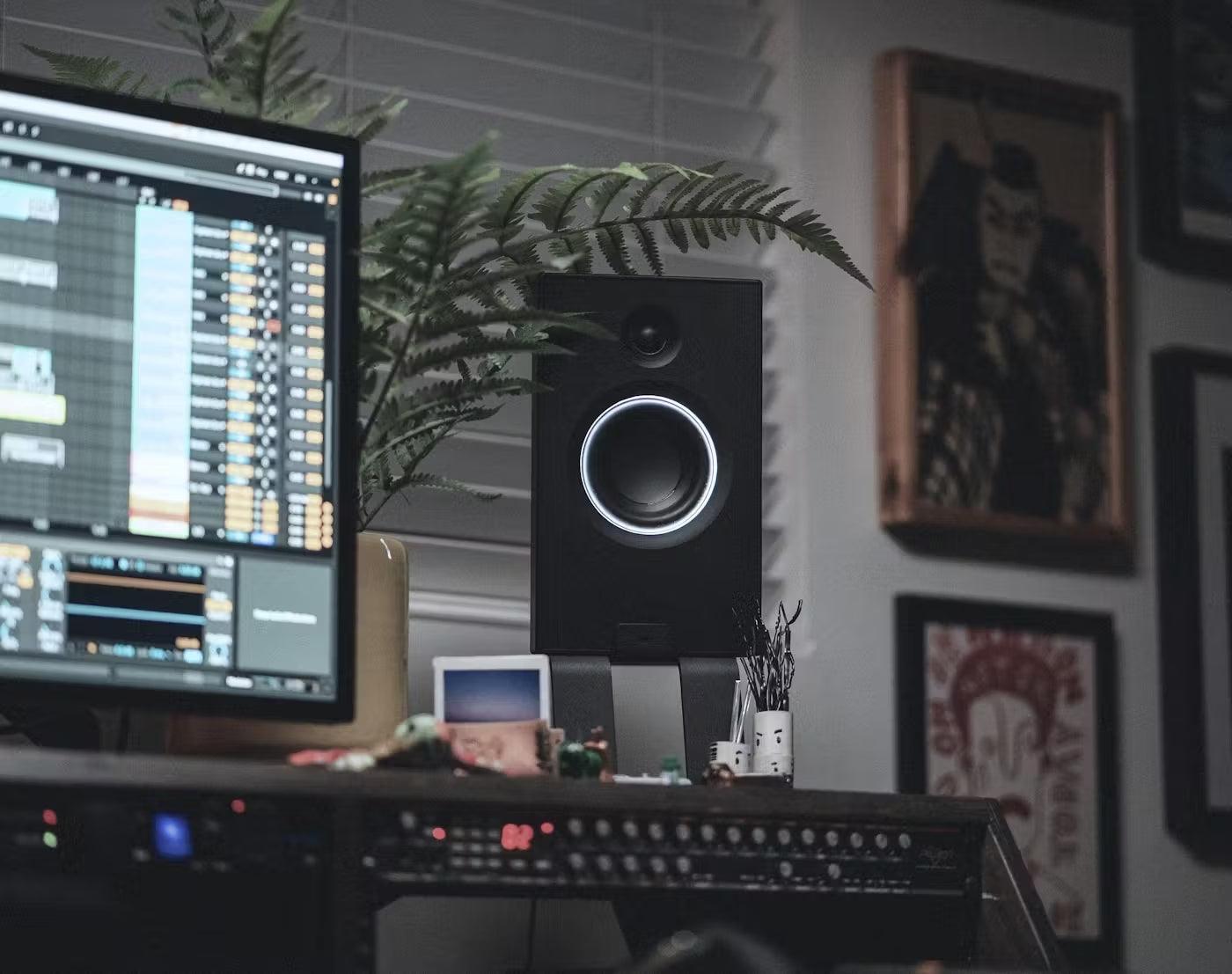You’ve got your condensers and dynamics, ribbons and spot mics, and you know the right way up to place the mic stand. What you might not be completely au fait with is the recording and miking up techniques you would use with the gear that you’ve bought.
If you are looking at this guide before buying microphones and preamps, take a look at our range to get you started and possibly even inspire.
Today, we’ll take a look at how you might mike up a stereotypical pop/rock band, and how you can use different microphones to get different effects.
Our Band
A stereotypical rock band has a guitarist or two, a bass player, a drummer and a singer. Occasionally you would find yourself replacing the guitarist with a keyboard player.
Each of these instruments has different needs when it comes to being recorded. And, there are a myriad of techniques to consider.
First, drums.
Drums
If you are looking for a natural, flat sound for a drum kit, placing a stereo condenser pair or single microphone like the AKG C414 above and behind the drummers head will give you a pleasant ambient sound of the whole drum kit. In some situations like for acoustic Jazz sessions, this mic would be all you would need.

In a pop/rock situation, your first port of call should be something called Close Miking. Close Miking a drum kit means applying a single microphone to each of the major kit elements, mere centimetres away from them. For the kick drum, you would use a dynamic or ribbon microphone designed for this purpose, such as a AKG D112 or a Sennheiser E604. These microphones can take the incredible sound levels that the kick drum creates and make it sound great. Placing the kick drum mic is a matter of personal taste, but try and aim it at the edges of the bass drum, a few inches at most away from the actual surface of the drum.
For the Snare drum, you have a few choices. The snare drum makes different sounds from both sides of the drum, one from the snare or rattle on the underside of the drum, one from the thwack of the sticks hitting the skin. For Snare drums, you want to use a pencil-shaped dynamic mic, the gold standard being the SHURE SM57. These microphones are basically bulletproof and sound great on both sides of the snare drum. For an extra-large sound, you could place an SM57 on both sides of the drum, and mix and match the tone at the mixing stage.

The final set of microphones for the drum kit are those used on the hi-hat and cymbals. If you opted for the single stereo mic behind the head of the drummer, you might have plenty of cymbals to work with. But, if you opt for more definition on a specific cymbal or hi-hat, you could use a small diaphragm condenser on the edge of the kit, pointing directly at the cymbal you wish to capture in full fidelity. Something like an AKG C451 or a Neumann KM 184 is an excellent microphone choice for this kind of occasion. This also applies to the Toms and any other additional pieces of the kit you can mike to your heart’s content.
Guitar
For the guitar, we have variety nowadays. Digital emulation of guitar amps has got so good with the rise of the AXE-FX and the Kemper Profiling amplifier, that sometimes you can record directly into your DAW using those, needing no microphones or noise complaints from the neighbors.
If you decide to use a real amplifier and cabinet, use a load box like the Universal Audio OX (or any other attenuator) to record the loud guitar sounds at a subtle volume.
Guitars can be miked up a few different ways, but the most common is using a dynamic microphone such as the SM57 or the Behringer B906 on the centre of the speaker cone on the guitar cabinet.

If you want another tone, you can point the microphone(s) at the cabinet off-axis, or target a different area of the speaker tone. This will give different dynamics and EQ profiles of the cabinet, so it’s well worth experimenting moving your mics around to find the perfect sound. The guitar can sound a little close and personal using only upfront microphones. To add to the tone, add a large condenser microphone like the Neumann TLM103 six to twelve inches behind your close mics. This catches some of the room ambiences and makes the whole tone larger than life.
Bass
Bass guitars have similar requirements as an electric guitar, although bass parts are generally recorded into the DAW. If you are mixing up a bass cab, be sure to use microphones that have the frequency response to handle them. Pro tip: Look at kick drum mics, they can be used for bass instruments too.
Vocals
For the vocalist, the options are variable depending on the singer, type of environment, and choice of genre. Thousands of musicians have used the SHURE SM58 and SM7B as vocal microphones for a long long time, and they are definitely a good starting point for your vocalist. If you are doing pop/rock vocals, these are great choices. If you are recording something softer, you’d probably want to call for a large-diaphragm condenser microphone, like the Neumann U47 to complement their voices. Do not cup your hands around such mics. They aren’t designed for that, and your recording will sound worse owing to the handling noise.

Choosing microphones is just part of the equation of getting a great sound for your recordings. With this guide, hopefully, you’re better informed about the choice you'll make. Ensure you look at our fantastic range of products and you’ll be sure to find something to suit your needs.
We are building a community of musicians and creators in the Middle East – those not afraid to follow their dreams and expand creative horizons. One way we support aspiring, active creators on their journey is by sharing a variety of content and information across essential topics in this complex and exciting industry of musical instruments and content creation gear.
When you're looking to pick up instruments or music and sound gear, get in touch with us for recommendations, the latest information on new and discontinued models, as well as sales and promotions. Whether you’re looking for a guitar, a keyboard, a piano, a drum kit, studio recording equipment, music production tools, or DJ gear – we can promise the widest variety, knowledgeable advice and the lowest prices across Dubai, Abu Dhabi, Sharjah, UAE, the Sultanate of Oman, the Kingdom of Bahrain, the State of Kuwait, and the Kingdom of Saudi Arabia.





